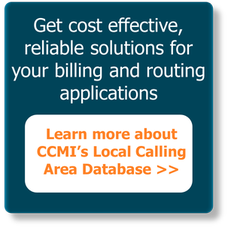FCC Releases Call Completion Order
December 10, 2013 | by Andrew Regitsky
On November 8, 2013, the FCC released its Report and Order (R&O) and a Further Notice of Proposed Rulemaking (FNPRM), in its proceeding designed to develop rules to address problems in the completion of long-distance calls to rural end user customers.
In the R&O, the Commission requires call providers to record, retain, and report rural call completion data to give it the information it needs to mitigate the call completion problem. These call providers include, long-distance voice service providers that make the initial long-distance call path choice for more than 100,000 domestic retail subscriber lines, counting the total of all business and residential fixed subscriber lines and mobile phones and aggregated over all of the providers’ affiliates. These carriers are called "covered providers". In most cases, they are the calling party’s long-distance provider. Covered providers include LECs, IXCs, CMRS providers, and VoIP service providers. These rules do not apply to intermediate providers for calls involving more than three carriers
Covered providers must begin recording the required data on the first day of the calendar month that is at least 20 days after the effective date of the information collections in these rules, which will be announced in the Federal Register upon approval of the collections by the Office of Management and Budget (OMB). Thus, for example, if the effective date of the information collections as announced in the Federal Register is on January 5, providers must begin recording the required data on February 1; if the effective date as announced is on January 20, providers must begin recording their data on March 1. The Wireline Competition Bureau will also issue a public notice announcing when providers must begin recording data.
Covered providers must record and retain the following information for each long-distance call attempt to rural ILECs by Operating Carrier Number (OCN): calling party number; called party number; signaling code information; date; time of day; whether the call is handed off to an intermediate provider and, if so, which intermediate provider; whether the call is interstate; and whether the call attempt was answered.
Data on calls of short duration (less than two seconds) must be retained. However, data is not required for call attempts returned by upstream providers or made to toll-free providers.
Data on call attempts must be retained for six months.
Covered providers must submit a certified report to the Commission once per calendar quarter that includes for each full month in that quarter: (1) for each rural OCN, the OCN, the state, the total number of attempted interstate calls, the number of attempted interstate calls that were answered, and the number of attempted interstate calls that were not answered, reported separately for call attempts signaled as busy, ring no answer, or unassigned number; (2) the same information described in (1), but for intrastate calls; (3) the same information regarding attempted interstate calls described in (1), but for non-rural OCNs in the aggregate; and (4) the same information regarding attempted intrastate calls described in (2), but for non-rural OCNs in the aggregate. Using these data, the Commission will calculate the percentage of calls answered (the call answer rate) and the percentage of calls completed to the terminating provider regardless of whether answered or unanswered by the user (the network effectiveness ratio).
The Commission adopts a Provider Safe Harbor to reduce a qualifying provider’s reporting obligations and reduce the data retention obligations from six months to three months. Qualifying covered providers must comply with the reporting requirements for one year and must retain the call detail records described above in a readily retrievable form for only three calendar months, but must have three full months of data available at all times. To qualify, a provider must certify on an annual basis either that it uses no intermediate providers, or that all of its contracts with directly connected intermediate providers allow those intermediate providers to pass a call to no more than one additional intermediate provider (that is, a total of no more than two intermediate providers in the call path) before the call reaches the terminating provider or terminating tandem. The provider must further certify that any nondisclosure agreement with an intermediate provider permits the covered provider to reveal the identity of the directly connected intermediate provider and any additional intermediate provider to the Commission and to the rural carrier(s) whose incoming long-distance calls are affected by intermediate provider performance. Finally, the provider must certify that if it uses intermediate providers, it has a process in place to monitor the performance of its intermediate providers. 232 Providers may utilize the safe harbor by filing a certification on any of the four quarterly filing dates throughout the year (and filings are due annually thereafter). Thus, a provider does not need to wait until the next annual certification to take advantage of the safe harbor. At the same time, a provider must comply with our full data retention and reporting obligations for any quarter in which it no longer qualifies for the safe harbor (i.e., its business practices cease to comply with the terms of its certification).
The Commission adopts a rule prohibiting false audible ringing. More specifically, all originating and intermediate providers are prohibited from causing audible ringing to be sent to the caller before the terminating provider has signaled that the called party is being alerted. The rule will apply to all originating providers and intermediate providers, including local exchange carriers, interexchange carriers, commercial mobile radio service (CMRS) providers, interconnected VoIP, and one-way VoIP providers. These rules apply to both interstate and intrastate calls, as well as to both originating and terminating international calls while they traverse U.S. networks.
The FNPRM seeks industry comments on additional reforms pertaining to autodial traffic, intermediate providers, and other safe harbor options and reporting requirements. Industry comments are due 30 days after this order appears in the Federal Register.
By Andrew Regitsky, President, Regitsky & Associates


